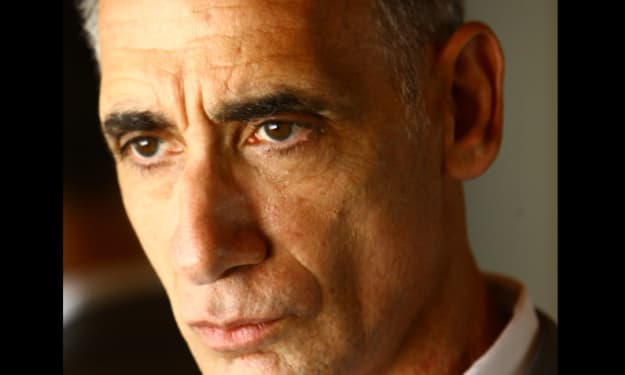
It is a truth, genuinely acknowledged that when one thinks of period dramas - their mind will often go to the likes of BBC’s Pride & Prejudice or Emma. Full of breath-taking scenery, theatrical declarations of love, the English countryside and British household actors playing characters most likely written by Jane Austen or the Bronte Sisters.
However, even in 2022, some people are still surprised by the diversity in said period dramas. Often this genre has been guilty of whitewashing or treating any diverse characters as “other” throughout the film or TV runtime. Whether it's these characters facing racial discrimination, suppressing their sexuality or even hiding a disabled relative in the furthest room of the house.
Some viewers argue that it’s historical accuracy to have white, heterosexual and able-bodied characters at the centre of these bonnets wielding scenes. Is this historically accurate? No. Many of these critics don’t know Emily Bronte’s Heathcliff is actually of Indian descent (only being played by only white actors until Andrea Arnold’s take on the Gothic Horror) or that Jane Austen’s final novel had a black main character who was an heiress by birthright and this fictional role mirrored the real-life legacy of the mixed-race daughter of Royal Navy Captain, Dido Elizabeth Belle.
Despite my issues with the show's writing, Bridgerton’s costume romance cast a very diverse cast of characters, rarely drawing attention to a character’s race, gender or sexual orientation. In many ways, the show is a fantasy, and the show offered more of an escapist and whimsical romance to mirror the likes of Austen. In recent years, we are seeing more representation in period dramas - that is true to life and some as the author intended in their work.
Sanditon introduced a black heiress at the centre of the ITV period drama, but the "young West Indian of large fortune" actually comes directly from the pages of Jane Austen's unfinished novel. Miss Lambe (played by Crystal Clarke) arrives in the seaside resort of Sanditon under the protection of Mrs Griffiths, a middle-aged white woman whose other "charges" include the English Miss Beauforts. Her reputed £100,000 fortune makes her an immediate subject of interest to the other characters.

Miss Lambe is Austen's only black character in any of her works. Sadly, the author died before she had a chance to finish the novel – but ever since, Austen fans and scholars have wondered what she was plotting for Miss Lambe.
The mention of Miss Lambe's skin colour comes in the paragraph when Austen introduces Mrs Griffiths and her three young women:
"Of these three, and indeed of all, Miss Lambe was beyond comparison the most important and precious, as she paid in proportion to her fortune. She was about 17, half mulatto, chilly and tender, had a maid of her own, was to have the best room in the lodgings, and was always of the first consequence in every plan of Mrs Griffiths."
Historically, the term "mulatto" was used to describe someone of mixed race – especially someone with one white parent and one black. So there is no doubt that Austen planned to introduce a West Indian character to her English town of Sanditon.
Unfortunately, we never actually found out how the town's residents reacted to this visitor, as a deteriorating Austen laid down her pen before the story's action really got going. But the early pages of the novel suggest that – despite the discrimination, she may face due to her skin colour from certain members of society – Miss Lambe's money would have opened doors and allowed her access to the highest levels of society.
This is where Andrew Davies stepped in, serial Austen screenwriter (of 1995's Pride and Prejudice and 2008's Sense and Sensibility), who has taken Austen's characters and finished her uncompleted story over eight episodes with two more seasons en route.

Although Austen’s character is fictional, a real-life historical figure faced similar challenges within 17th century England - Dido Elizabeth Belle. In 2013, Amma Asante adapted Belle’s story for the screen. This film went on to win thirteen awards and highlighted a part of British history that is rarely talked about or even known.
Amma Asante’s Belle was inspired by the true story of Dido Elizabeth Belle (Gugu Mbatha-Raw), the illegitimate mixed race daughter of Royal Navy Captain Sir John Lindsay (Matthew Goode). Raised by her aristocratic great-uncle Lord William Murray, 1st Earl of Mansfield (Tom Wilkinson), and his wife (Emily Watson), Belle's lineage affords her certain privileges. Yet, her skin colour prevents her from fully participating in the traditions of her social standing. Left to wonder if she will ever find love, Belle falls for an idealistic young vicar's son bent on change, who, with her help, shapes Lord Mansfield's role as Lord Chief Justice to end slavery in England.

There are apparent similarities between Lamb and Belle’s stories, where art imitated life very much. Both women are educated and born into prestigious families - often deserving of having a seat at the table than most people already sat down - and both Clarke and Mbatha-Raw bring to life the complexities of these women and how they dealt with society’s bigotry.
Another historical fictional character not many know about is Heathcliff from Wuthering Heights. Yes, many people know his brooding character - yet not many know that he’s not white, which can be found in the text itself. Although most film adaptations of the Emily Brontë novel, until Andrea Arnold's 2011 movie, have cast white actors to portray Heathcliff – Laurence Olivier, Ralph Fiennes, Tom Hardy, Timothy Dalton – he is described repeatedly as a Lascar (an Indian sailor), even in Chapter Seven, Nelly Dean asks of him “Who knows but your father was Emperor of China, and your mother an Indian queen?”.

With Heathcliff being both described as Indian and a "dark-skinned gypsy", many critics believe that his character is mixed race. However, only Arnold’s film has explored the book's racial themes with the casting of James Howson and Solomon Glave, who played the adult and younger versions of Heathcliff, respectively.
We’ve begun to see a shift from the period dramas of the 90s, with more representation across the board with diverse casting - from David Oyelowo’s Inspector Javert in Les Misérables to Anjli Mohindra's Joan as a British South-Asian spy in Netflix's Munich: The Edge of War - and in doing so, this brings viewers more authentic and layered stories to the screen.






Comments
There are no comments for this story
Be the first to respond and start the conversation.